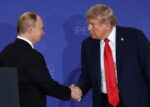In response to the news that Cheniere Energy was opening an office in Beijing there have been suggestions that the company will not make a similar move in Warsaw because Americans are less interested in the Polish LNG market. However, Polish-US talks on the subject are taking place in Warsaw and London – writes Wojciech Jakóbik, editor in chief of BiznesAlert.pl.
London
The Cheniere Energy’s office in London is responsible for LNG trade on the European market. “Our office in London is the hub where we manage our presence in Europe, including the possibilities of delivering LNG to Poland and other European countries,” Eben Burnham-Snyder Cheniere Energy’s spokesman told BiznesAlert.pl. “We are excited about the first US LNG delivery to Poland, which took place in June this year and we are hoping for more in the future,” he added.
“We have been working since February, we closed three transactions. We are getting ready for the next steps,” Ireneusz Łazor head of PGNiG’s office in London said. London is one of the regional centers of this kind of activities in the world. The other ones are Geneva, Singapore and Houston. “The Chinese are quite active. They will hold a big LNG conference in 2019. They are betting on LNG imports and probably this is why Cheniere wants to open an office there. However, from our point of view the office in London is enough to manage the cooperation with this company,” Łazor explained.
Warsaw
At the same time, the talks on the short-, mid- and long-term contracts for LNG deliveries from the US are conducted directly by PGNiG representatives in Warsaw who hold meetings with Cheniere Energy as well as other potential liquefied gas suppliers to Poland.
The key element of the talks is price indexation, which contrary to spot contracts, has to be included in a futures contracts to limit the risk of price fluctuation on the exchange. Poles would like to index against the TTF exchange, while Americans traditionally index against the Henry Hub. The agreement to index against TTF would be a Copernican revolution with a perspective to interest Poland’s partners in Central and Eastern Europe with such cheap gas. This would be a great starting point to build the Polish gas hub as a new price point of reference in the region.
Still, it is possible to calculate the price differently – in line with Incoterms 2000. The price can be calculated at the LNG terminal plus freight (Free on Board – FOB) or at the delivery point (Delivery at Frontier – DAF, Delivery Ex Ship-DES, Delivery at Quay – DEQ changed in 2010 to Delivery at Terminal – DAT).
In the second case the supplier takes the responsibility for unforeseeable circumstances and the price does not change in case, e.g. there are problems with deliveries as it happened with LNG from Qatargas. Poles received the gas at the same price thanks to a contract, which put the responsibility on the Qatari who had to take the risk associated with the agreement. Thus, the delivery price despite the costs paid for by Qatar did not change because Qatargas was responsible for the delivery.
One can suppose that the LNG spot delivery contracts from the US to Poland were signed on the basis of the same model. This type of agreements are concluded within hours and include a simple quotation of one delivery, which includes all costs incurred by the producer. Undoubtedly, because of the oversupply on the LNG market, Americans were eager to make the price attractively low. According to PGNiG it was lower not only than the offer of Russia’s Gazprom, but also than the prices at the German exchange which is the cheapest in the region.
Fortunetelling on the price of US LNG
It is worth stressing once again that the journalistic argument, which says that the LNG from the US has to be expensive and more expensive than gas from Russia is false. First of all, there is no contract yet, which could be compared to the Yamal agreement. Secondly, both documents will most probably remain classified. Thirdly, LNG from the US may be cheaper than Russian gas if our negotiators are successful. They have declared they would not sign the contract if that was not the case. After all, they do have an alternative.
Since the talks are still in progress, we do not know when the contract could be signed. “The futures agreement may crop up in a few days, or perhaps a few months. Such is the nature of negotiations,” Maciej Woźniak, PGNiG’s Vice-President of the Management Board responsible for the negotiations told BiznesAlert.pl.








